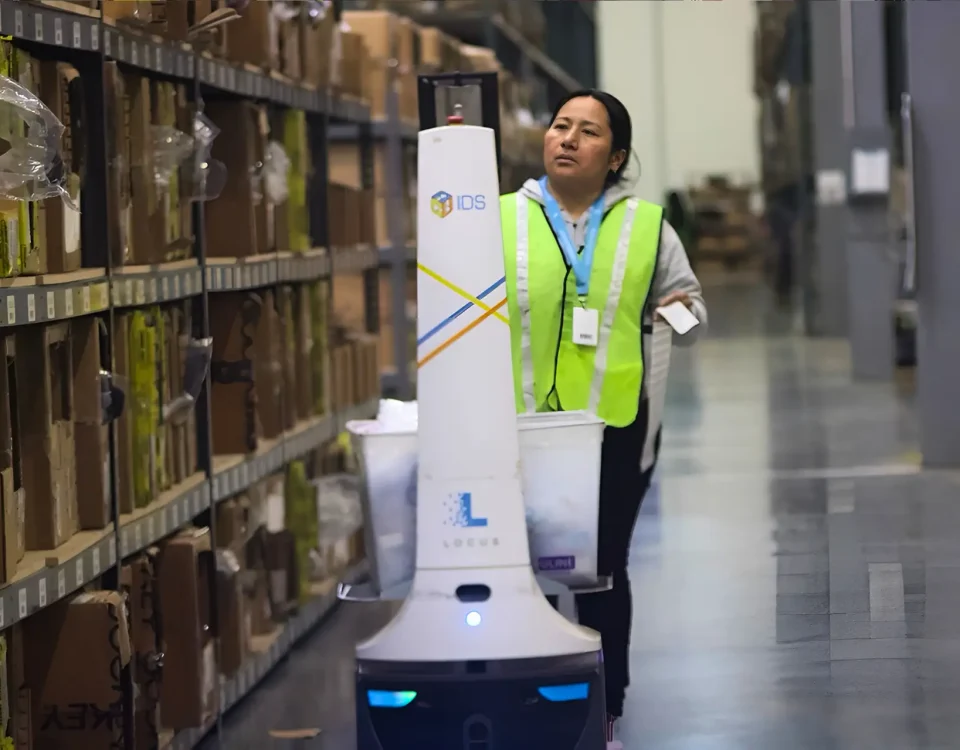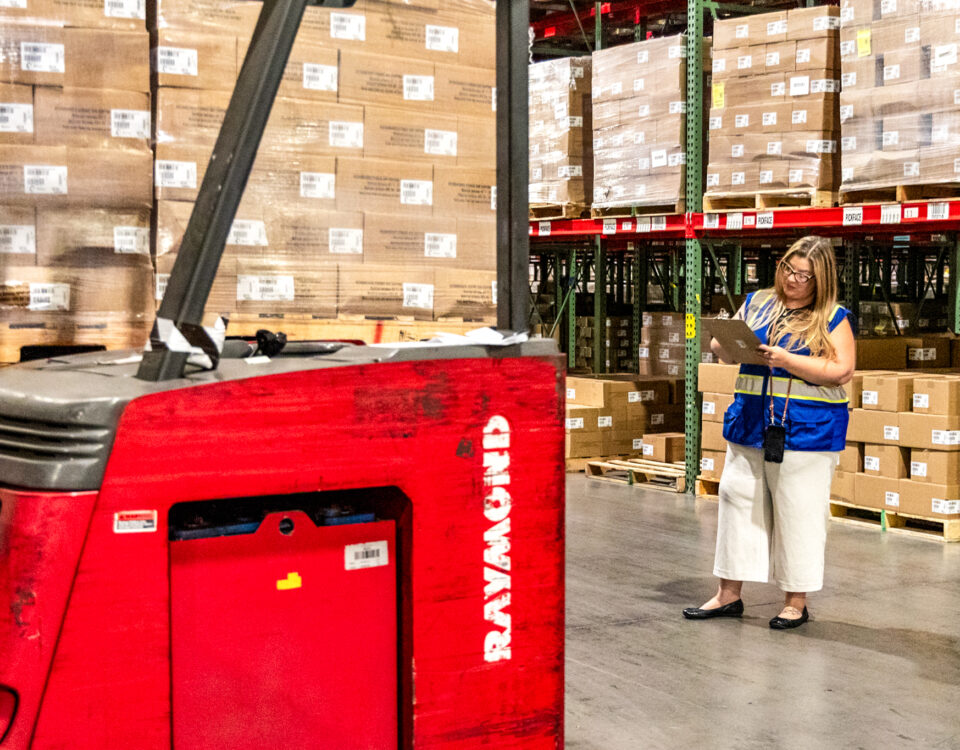A 3PL switch in Q3 sounds risky because it is.
Timelines are compressed, teams are already stretched, and every week lost in planning cuts into the time needed to stabilize before orders start rushing in. But for some brands, staying with a misaligned provider could cost more than a fast transition.
If your team is exploring an immediate change, this outline will help you understand what’s required to switch 3PLs before peak season and complete your go-live by October 15.
You must start with a focused discovery process.
Week one needs to set the tone. If discovery isn’t deliberate, the rest of the project will be reactive and end up causing delays or added expenses in the long run. During this process, many teams focus on pricing or solution details too early. But without clarity around urgency, constraints, and ownership, you can’t be sure that the pricing you’ll receive will align in the long run.
In order for your discovery process to be effective, your new 3PL should ask these questions:
- What specific breakdowns are forcing this change?
- What has to be in place before holiday volume peaks?
- Who on your team has the authority to drive scope, timing, and decisions?
- Where does the operational data live, and can you access it quickly?
- Are there internal deadlines, tech freezes, or events that limit flexibility?
Your discovery call should be where you get honest about what’s driving the change and whether your team can realistically switch 3PLs before peak season hits.
What it actually takes to switch 3PLs & what can go wrong if it’s not mapped early.
Nine weeks (early August through October 15) gives just enough time to scope, align, test, and launch before things get really busy. But there’s little room for delays. Every week needs to serve a clear purpose, or go-live dates get pushed back into peak volume—which could put your brand at risk.
Week 1: Discovery & Data Collection
Operations teams can’t build a meaningful scope without data. So, the earlier you share it, the faster you’ll get a model that reflects your business and not a generic template that you have to spend time fixing later.
Here is the information that your new 3PL will need in order to create a custom proposal and strategy for you:
- SKU-level detail, product handling notes, and packaging requirements
- Historical order volume by channel and destination
- Current and inbound inventory forecasts
- System dependencies and integration requirements
- Known pain points or process gaps with your current partner
The sooner your team can share real operational data, the more accurately the new fulfillment provider can scope your business. It doesn’t have to be perfect, but without a solid baseline, everything else stalls or gets rebuilt later.
Week 2–3: Solution Design & Pricing
Every workflow needs to be mapped to your volumes, your product handling needs, and the way your business actually functions, if you’re going to make a quick decision to switch 3PLs before peak season. Generic models or assumptions won’t give you the details, workflows, or costs you need in order to make a sound decision.
Here’s a sample of what should get mapped out:
- Receiving flow, labeling needs, and ASN protocol
- Pick/pack methods aligned to order volume and speed expectations
- Kitting, assembly, or value-added services
- Returns handling and exceptions process
- Tech stack alignment and data capture expectations
- Shared labor model or space considerations if volume spikes
Scope and pricing are only as stable as the plan behind them. If the structure isn’t grounded in detail, small changes later can ripple through the entire operation, causing unexpected charges.
Week 4: Proposal Review & Internal Decision
By now, your team should have a complete operational model and pricing proposal. It will be important to meet with the 3PL to review this together to ensure the proposal, terms, and timelines are understood—and that you have everything you need to move forward to make an internal decision.
This stage is where teams often delay the process, not because of the proposal, but because of unclear ownership of who is responsible for making final decisions.
These are key actions to take this week:
- Validate that the scope reflects what was discussed
- Ensure pricing includes all operational considerations, not just volume
- Get input from legal, IT, and finance, and close open questions quickly
- Assign one internal lead to move the project forward
- Make a go/no-go decision before the end of the week
This is where transition timelines most often fall apart. Delays in decision-making shrink the safe window for onboarding and testing, which can create problems when volume hits in Q4.
Week 5–6: Contracting & Launch Prep
Contracting doesn’t have to pause operational work. While legal finalizes terms, both teams can move forward on implementation prep. Waiting until every signature is in hand to start that work is what costs valuable lead time and limits your ability to test before peak hits.
These tasks should happen at the same time:
- Drafting and finalizing SOPs for inbound, outbound, and returns
- Confirming labeling, packaging specs, and inserts
- System mapping, API documentation, and WMS workflows
- Inventory transfer timing and carrier setups
- Team structure for go-live support and communication
This is often the first time the proposed solution gets tested against real workflows. Starting early gives both teams room to work through details while there’s still time to make adjustments before live onboarding and testing begin.
Week 7+: Onboarding & Testing
At this point, both teams are running in parallel with IT finalizing system connections and Operations beginning receipt and setup. At this stage, the goal is to run actual workflows in real systems, not simulations or best-case scenarios. This is the best time to identify any potential gaps, misaligned expectations, or missing steps.
Test coverage should include:
- IT integration and connection testing (1 week, followed by 2-3 weeks of testing)
- Product receipt (1 week), setup (1 week), and ramp up (2-3 weeks)
- Processing live or test orders with actual product and return flows (2-3 weeks)
- Checking pick accuracy, packaging, and labeling compliance
- Running through returns and exception processes
- Tracking against agreed SLAs and daily cutoffs
- Validating reporting and visibility tools
Anything you find now is far easier to fix than when order volume is spiking in November. This phase is where stability gets built. The more clarity and rigor you bring to testing, the fewer surprises you’ll face when it counts.
Week 9+: Go-Live
Go-live is when everything built so far gets tested under real volume—but it’s not a single day, it’s a phase. These first few weeks are where inventory is staged, misalignments are caught early and corrected, teams are aligned, and workflows are being monitored.
A successful launch doesn’t mean everything runs perfectly. It means issues are visible, response times are fast, and both teams are operating from the same playbook. This go-live phase sets the tone for the rest of the season.
Pay attention to these areas upon go-live:
- Managing inventory integrity (what was planned vs. what’s actually moving)
- Monitoring for system misfires, label issues, or process bottlenecks
- Daily check-ins on fulfillment speed, accuracy, and exceptions
- Alignment between your ops team and the provider’s floor leads
- Adjusting inventory logic and staffing as demand patterns emerge
Go-live isn’t the finish line. It’s the first real test of how the system holds up under pressure. The more aligned your teams are, the easier it will be to manage volume and avoid reactive decisions later in the season.
Some teams can move quickly. Others need more time or clearer expectations before they commit. This timeline gives you a way to step back and assess whether your team, your provider, and your data are in a position to make a switch this late in the year.
Even if you decide to wait until Q1, walking through this structure now helps your team understand what a real fulfillment transition looks like. If your current partner still isn’t clear about how they’ll support you through your peak, this might be the only realistic window left to switch 3PLs before peak season.











